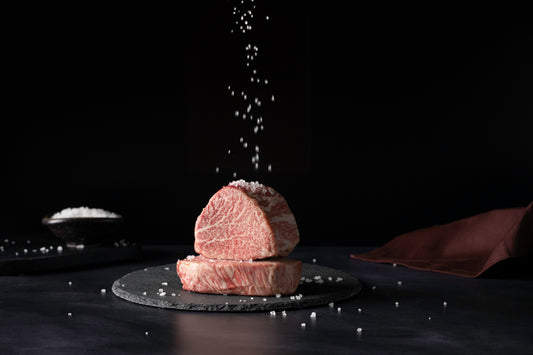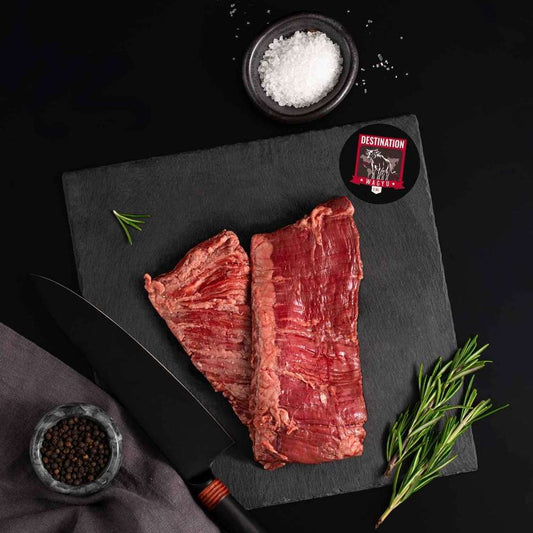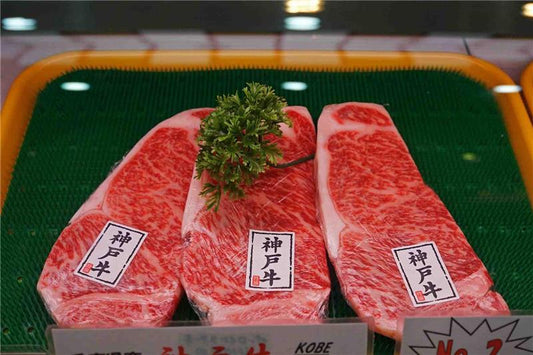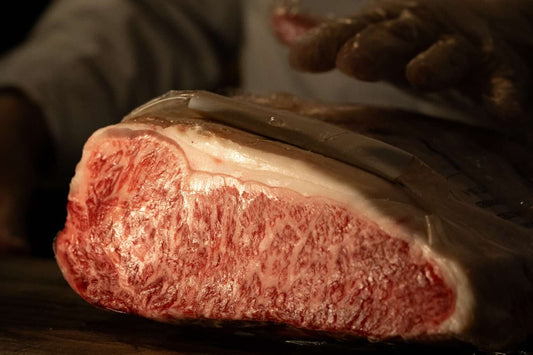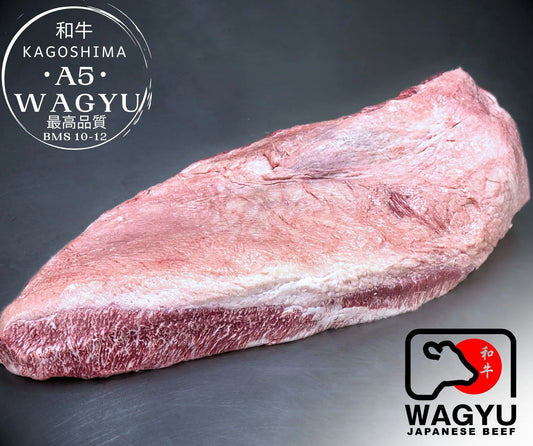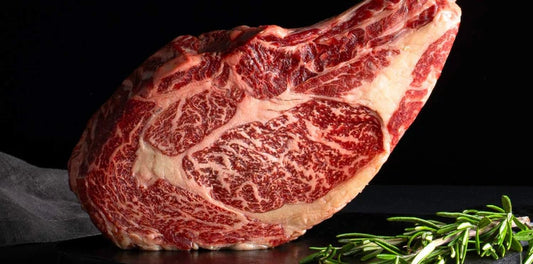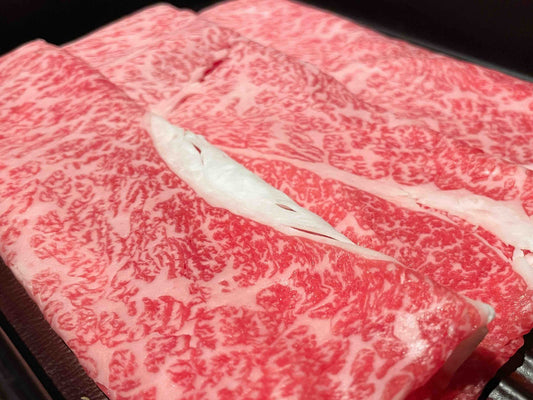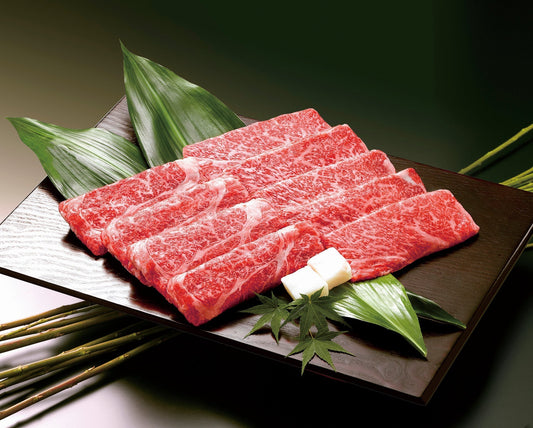Wagyu beef is more than just a luxurious ingredient—it’s a masterpiece of fat distribution, texture, and umami that demands respect at every stage of preparation. As professionals in the culinary space, we understand that cooking isn’t just about applying heat but about manipulating and preserving the integrity of an ingredient. With Wagyu, every decision we make—from the cut selection to the heat application—directly influences the end result.
Unlike traditional beef, where marbling enhances tenderness but requires some external fat for succulence, Wagyu’s high intramuscular fat content changes the cooking dynamic entirely. We’re not just dealing with protein and a bit of marbling; we’re dealing with an ingredient whose primary characteristic is its low melting point fat and how it interacts with muscle fibers. This fundamental difference means that conventional steak techniques must be modified, or even abandoned, in favor of methods that maintain structure, prevent excessive fat loss, and highlight the deep umami that makes Wagyu legendary.
In this guide, I’ll walk you through everything you need to know about cooking Wagyu beef steak at a professional level. We’ll explore grading systems, preparation techniques, heat management, and advanced cooking methods so that you can extract the best possible texture and flavor from this exceptional product. Whether you’re working with Japanese A5, American Wagyu, or Australian Wagyu, the principles remain the same: respect the fat, control the heat, and let the steak shine.
Understanding Wagyu Beef
Wagyu Grading Systems and Their Impact on Cooking
The first step in cooking Wagyu properly is understanding the grading system, as it directly affects cooking methods. Japanese Wagyu is graded using the A5 system, which evaluates marbling, meat color, fat color, and texture. The Beef Marbling Score (BMS) runs from 3 to 12, with A5 typically falling between 8 and 12. The higher the score, the more delicate the structure of the meat, and the more cautious we must be with heat exposure.
American Wagyu, often a crossbreed between Japanese Wagyu and Angus, follows the USDA grading system but typically surpasses Prime in marbling. It has more structural integrity than purebred Wagyu, allowing for slightly more aggressive cooking techniques. Australian Wagyu, graded by the MB (Marble Score) system, follows a similar pattern, with MB9+ being closest to Japanese A5.
The takeaway here is that the more highly marbled the Wagyu, the gentler the cooking approach must be. A5 Wagyu will disintegrate if overcooked, whereas American Wagyu or Australian MB6+ can handle more robust methods like traditional pan-searing.
Unique Fat Composition and How It Affects Cooking
Wagyu fat has a much lower melting point than conventional beef fat, around 25°C (77°F). This means that even at room temperature, you may notice Wagyu beginning to soften. When cooking, this property becomes both a strength and a challenge. The key is to apply just enough heat to activate the Maillard reaction without over-rendering the fat, which would result in a greasy, overly rich experience.
The way we manage this fat is crucial. Too much heat, and it liquefies before the meat’s structure sets. Too little heat, and the fat remains underdeveloped, leading to a chewy, waxy texture. The balance comes down to choosing the right cooking method based on the specific cut.
Preparation Techniques
Handling & Storage Best Practices
Proper handling begins long before Wagyu hits the pan. Unlike standard beef, Wagyu’s delicate fat structure means it’s prone to oxidation and flavor degradation if not stored correctly. Vacuum-sealing is essential for preserving its pristine condition, and freezing should be done with extreme caution. If Wagyu is frozen, it should be thawed slowly in refrigeration over 24-48 hours to prevent moisture loss.
Once thawed, Wagyu must be brought to room temperature before cooking. Many chefs mistakenly believe that cold searing can work for all steaks, but with Wagyu, the internal fat needs time to soften slightly before heat is applied. Otherwise, the interior remains too dense, and you risk an uneven cook.
Seasoning Strategy
A5 Wagyu, particularly from Japan, requires very little seasoning because its richness speaks for itself. A simple, high-quality sea salt (like Maldon or Sel Gris) is enough to enhance its natural umami without overpowering it. American and Australian Wagyu, however, can benefit from additional seasoning—a touch of freshly cracked black pepper or a hint of sansho pepper can help cut through the fat.
Salt should be applied immediately before cooking for thinner cuts or at least 30 minutes before for thicker cuts. The reason? Salt draws out moisture initially but then reabsorbs, creating a dry surface for better searing.
Cooking Methods and Techniques
Direct High-Heat Searing
For thin A5 Wagyu steaks (½-inch or less), the best approach is a high-heat, flash-searing method. A cast iron or carbon steel pan should be heated until just below smoking (~400-450°F). Instead of oil, we use a small cube of Wagyu fat to coat the pan—this ensures the steak sears in its own rendered fat, enhancing flavor.
The steak is placed in the pan and cooked for 30-45 seconds per side, ensuring a deep, golden-brown crust without overcooking the interior. Resting is minimal—because Wagyu fat remains soft at lower temperatures, prolonged resting isn’t necessary.
Reverse Sear for Thicker Cuts
For thicker cuts (1 inch or more), a reverse-sear technique works best. We start by placing the steak in a 250°F oven or sous vide bath at 125°F until it reaches an internal temperature of 110-115°F. Then, it’s seared in a scorching pan or over binchotan charcoal for a hyper-crisp exterior.
This method allows the interior fat to slowly break down without liquefying completely, preserving Wagyu’s buttery texture. Resting is still minimal, as the gradual heat application prevents excessive juice loss.
Binchotan Charcoal Grilling
If you want to embrace traditional Japanese-style grilling, binchotan charcoal provides unparalleled control and flavor. Unlike traditional lump charcoal, binchotan burns at an even temperature with no aggressive flare-ups, which is crucial for Wagyu. The steak should be positioned slightly off-center from the heat source, allowing it to develop a slow, even sear without dripping fat directly onto the flames.
Managing Doneness & Internal Temperatures
Wagyu is best served rare to medium-rare to preserve its fat structure, juiciness, and signature melt-in-your-mouth texture. The key to achieving the perfect doneness lies in precise temperature control, as Wagyu’s high marbling content reacts differently to heat compared to conventional beef.
Optimal Internal Temperatures for Wagyu
-
Rare: 115°F - 120°F (46°C - 49°C) → Ultra-soft, rich, and slightly cool in the center. Best for thin A5 cuts like striploin.
-
Medium-Rare: 125°F - 130°F (52°C - 54°C) → Ideal for most Wagyu steaks, as it allows the fat to soften without excessive rendering.
-
Medium: 130°F - 135°F (54°C - 57°C) → Acceptable for American or Australian Wagyu, but not recommended for A5 due to over-rendering of fat.
-
Medium-Well & Well-Done: Not advised → Overcooking causes fat loss, chewy texture, and a greasy mouthfeel.
Why A5 Wagyu Should Not Exceed 130°F
A5 Wagyu has extremely fine and delicate marbling with fat that melts at low temperatures (~77°F/25°C). Cooking beyond 130°F can cause the fat to break down too much, making the steak greasy rather than silky. Unlike traditional steaks where fat is more structured, Wagyu’s delicate balance is easily lost if overcooked.
Why American & Australian Wagyu Can Handle Slightly Higher Temperatures
Unlike Japanese A5 Wagyu, American and Australian Wagyu are crossbreeds with a higher percentage of muscle fiber and slightly firmer texture. This means they retain more structure when cooked to 135°F, but anything beyond that starts to lose the luxurious, buttery quality that defines Wagyu.
Techniques to Achieve Perfect Doneness
-
Use a Precise Meat Thermometer – Due to Wagyu’s rapid response to heat, relying on touch or guesswork risks overcooking. Insert a probe thermometer into the thickest part of the steak to monitor temperatures in real time.
-
Reverse Searing for Thick Cuts – Cooking at low heat (~225°F) until the steak reaches 15°F below the target temperature, then finishing with a hot sear ensures even cooking.
-
Carryover Cooking Awareness – Since Wagyu retains heat well, remove the steak 5°F before the final target temp, as it will continue to rise during resting.
-
Use High Heat for Thin Cuts – Thin Wagyu cuts (½ inch or less) should be flash-seared at ultra-high temperatures (450°F+) for less than a minute per side to prevent internal overcooking.
Resting, Slicing, and Serving Wagyu Beef Steak
The Science of Resting Wagyu
Resting is a critical step in cooking traditional steaks, as it allows the juices to redistribute, ensuring a moist and flavorful final product. However, Wagyu behaves differently due to its high-fat content and unique melting properties. While conventional wisdom suggests resting steaks for at least five to ten minutes, Wagyu requires a significantly shorter resting time. The reason is that the fat in Wagyu has already rendered at a lower temperature, meaning there is less need for redistribution. If the steak is left to rest for too long, the fat begins to solidify rather than remain in its semi-liquid, buttery state, which is what gives Wagyu its signature texture.
For thin A5 Wagyu steaks, resting should not exceed one to two minutes. This brief pause allows the surface temperature to stabilize without compromising the integrity of the fat. Thicker cuts, such as Australian or American Wagyu ribeye, can handle a rest period of up to five minutes, but anything beyond that risks cooling the fat too much. The ideal method to maintain warmth is to place the steak on a wire rack rather than a flat plate, preventing steam from accumulating and softening the crust. Additionally, covering the steak loosely with parchment or foil (not tightly wrapped) can help retain heat without trapping excess moisture.
Resting also plays a role in preventing carryover cooking, which is when residual heat continues to cook the steak after it has been removed from heat. Given that Wagyu is best enjoyed between rare and medium-rare (120°F-130°F), understanding carryover heat is essential. If the steak is removed from the heat at 125°F, it may rise to 130° F during resting. This is particularly important for reverse-seared or thick-cut Wagyu, where precision cooking is necessary to avoid overcooking and losing the melt-in-your-mouth effect.
Slicing Techniques to Maximize Texture and Flavor
Slicing Wagyu incorrectly can significantly impact the eating experience. The key to slicing any steak, especially Wagyu, is to cut against the grain to shorten muscle fibers, resulting in a more tender bite. This is even more crucial for Wagyu because, while the marbling makes the beef tender, improper slicing can still lead to a chewy texture rather than the expected silky mouthfeel.
For thin-cut Wagyu, such as yakiniku-style slices or A5 steaks, a sharp Japanese sujihiki or slicer knife is preferred to make clean, precise cuts. A long, smooth slicing motion is recommended rather than a sawing action, which can disrupt the delicate fat distribution. The slices should be kept relatively thin (¼ to ½ inch) for optimal balance between fat content and muscle texture.
For thicker cuts, like American Wagyu ribeye, the slicing technique should mirror that of traditional steakhouse cuts, meaning a thickness of ½ to ¾ inch, depending on the final serving method. However, unlike conventional ribeye, where some residual chewiness is expected, Wagyu should be sliced more deliberately to highlight its tenderness. The temperature of the meat at the time of slicing also matters—if sliced too hot, the juices may run excessively; if sliced too cool, the fat loses its softness.
Proper slicing also impacts mouthfeel. The goal is to ensure that each bite delivers an even distribution of fat and protein, allowing the diner to fully appreciate the luxurious quality of the Wagyu. For presentation purposes, a slight diagonal cut can expose more marbling on the surface, making the dish more visually appealing.
Pairings & Serving Enhancements
Recommended Accompaniments
When serving Wagyu, balance is the key consideration. Because of its richness, Wagyu doesn’t need heavy sauces, overpowering seasonings, or complex sides. Instead, the ideal accompaniments should be chosen to contrast the fat’s decadence while enhancing umami.
In Japanese cuisine, Wagyu is traditionally paired with grated daikon radish, yuzu kosho (a spicy citrus paste), or a simple soy-based dipping sauce. These elements provide acidity and brightness, which help cut through the richness of the beef. Additionally, a small pinch of sea salt or wasabi can enhance the natural umami without overwhelming the palate. In fine dining applications, truffle salt or aged balsamic vinegar can add an extra dimension to Wagyu without diminishing its integrity.
For Western-style servings, Wagyu pairs well with light, crisp vegetables or earthy flavors. For instance, a side of roasted mushrooms with a touch of shoyu can complement the steak’s umami depth. Steamed or charred asparagus, miso-glazed eggplant, or a delicate watercress salad provide contrast without stealing attention from the Wagyu itself. If starch is needed, a simple pomme purée (French-style mashed potatoes) or Japanese rice cooked in dashi broth can provide a neutral but luxurious backdrop.
One common mistake is serving Wagyu with heavy, buttery sauces such as béarnaise or bordelaise. While these sauces work beautifully with conventional ribeyes or filet mignons, Wagyu already has an inherent richness that doesn’t require additional fat-based elements. Instead, it’s best to embrace minimalism, allowing the beef to stand out.
Ideal Beverage Pairings
Choosing the right beverage pairing for Wagyu can elevate the experience. Unlike regular steak, which pairs well with bold, tannic wines, Wagyu’s fat content changes the game. High-tannin wines can sometimes clash with the delicate fat structure, making the pairing feel overwhelming rather than complementary.
For red wine lovers, a Pinot Noir (especially from Burgundy) or a well-aged Bordeaux blend works exceptionally well. These wines have enough acidity and complexity to balance the beef’s richness without overpowering it. Japanese Koshu wine, which has subtle citrus and mineral notes, is an excellent pairing that enhances the umami characteristics of Wagyu.
Alternatively, Champagne or other high-acid sparkling wines create a stunning contrast to Wagyu. The effervescence cuts through the fat beautifully, providing a refreshing palate cleanser between bites. For those preferring beer, a light, dry Pilsner or a crisp Japanese lager (like Asahi or Sapporo) can provide the necessary contrast without becoming heavy.
For traditional pairings, sake (Daiginjo or Junmai) offers an umami synergy with Wagyu. A well-structured sake with moderate acidity can enhance the beef’s natural flavors, making it an excellent choice for purists who want a Japanese-style experience.
Advanced Techniques & Experimental Approaches
Hybrid Cooking (Cold-Smoking Before Searing)
One experimental technique gaining popularity in fine dining is cold-smoking Wagyu before searing. This involves exposing the steak to gentle smoke at a temperature below 85°F (30°C) before applying traditional heat. The goal is to infuse a subtle smokiness without cooking the meat, preserving the delicate marbling.
This method works best with binchotan charcoal or fruitwood chips (like cherry or applewood), which impart a mild, refined smoke flavor rather than the aggressive notes of mesquite or hickory. Cold-smoking for 15-20 minutes, followed by a reverse sear, enhances Wagyu’s complexity without overpowering its natural sweetness.
Using Wagyu Fat for Confit Cooking
Another advanced technique is using rendered Wagyu fat for confit cooking. Instead of using duck fat, professionals can slow-poach proteins like chicken, pork, or even fish in Wagyu fat, infusing them with a luxurious texture. This technique allows chefs to repurpose Wagyu trimmings, reducing waste while enhancing the depth of other dishes.
Final Thoughts
Cooking Wagyu is an exercise in precision, balance, and restraint. Unlike traditional steak, where bold flavors and aggressive searing dominate, Wagyu requires a more nuanced approach. Every aspect—from cut selection and seasoning to heat control and slicing technique—determines whether the steak reaches its full potential.
When done right, Wagyu offers an unmatched experience: a perfect blend of umami, luxurious fat, and melt-in-your-mouth texture. But more than that, it teaches us an essential culinary lesson: sometimes, less is more. The mastery of Wagyu cooking is not about adding complexity, but rather about refining simplicity to its highest form.
About Destination Wagyu
At Destination Wagyu, we are dedicated to providing an unparalleled Wagyu experience, ensuring that each cut we offer meets the highest standards of excellence. Our partnerships with esteemed suppliers such as Miyazaki, Kobe Wine, Kagoshima, and Stone Axe allow us to deliver authentic Wagyu beef renowned for its exceptional marbling and tenderness. Whether you're seeking a ribeye, tomahawk, or any other premium cut, our selection is curated to satisfy the most discerning palates.
We understand that preparing Wagyu is an art form, and we are here to support you in mastering this craft. Our Concierge Service is designed to assist with education, recipes, and personalized recommendations, enhancing every aspect of your Wagyu journey. From selecting the perfect cut to providing detailed cooking instructions, we aim to make your dining experience extraordinary.
Experience the luxury and quality that define Destination Wagyu. Explore our curated gift boxes and tailored subscription services, and discover why we are recognized as a trusted source of premium Wagyu beef. Visit our website to learn more and elevate your culinary adventures with the finest Wagyu available.


